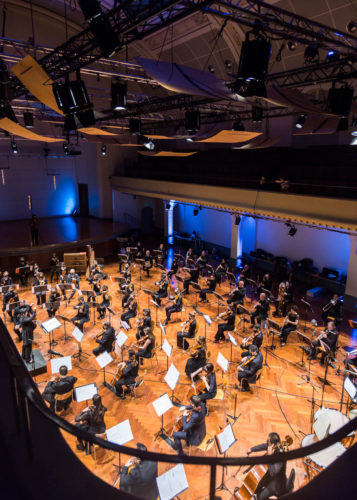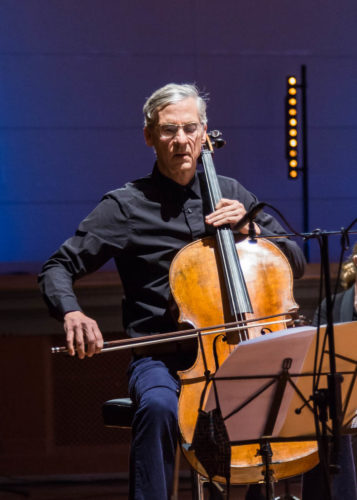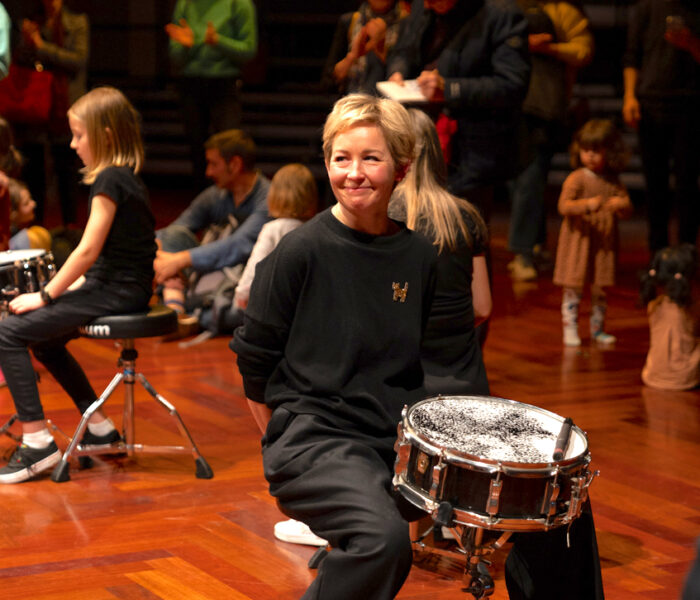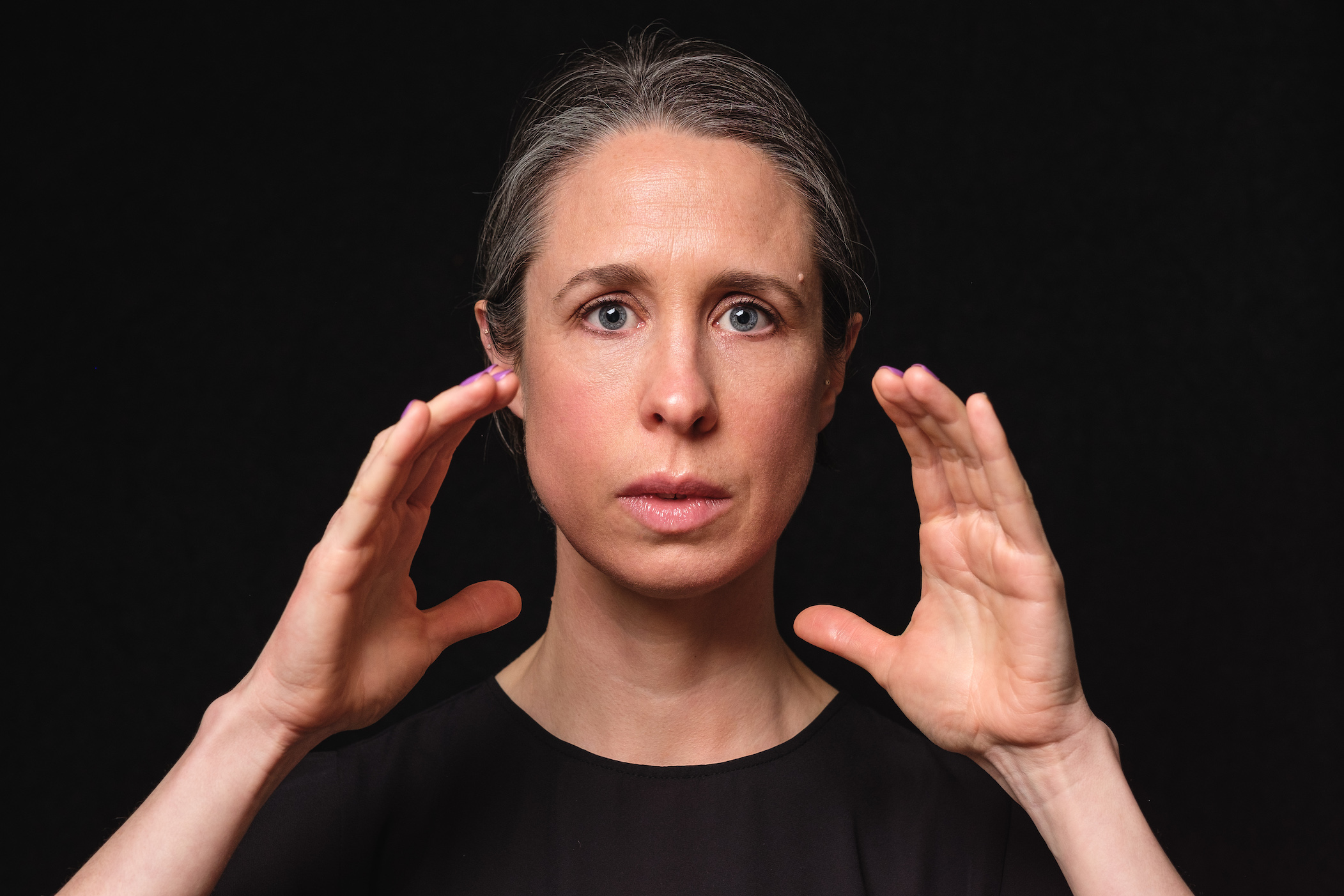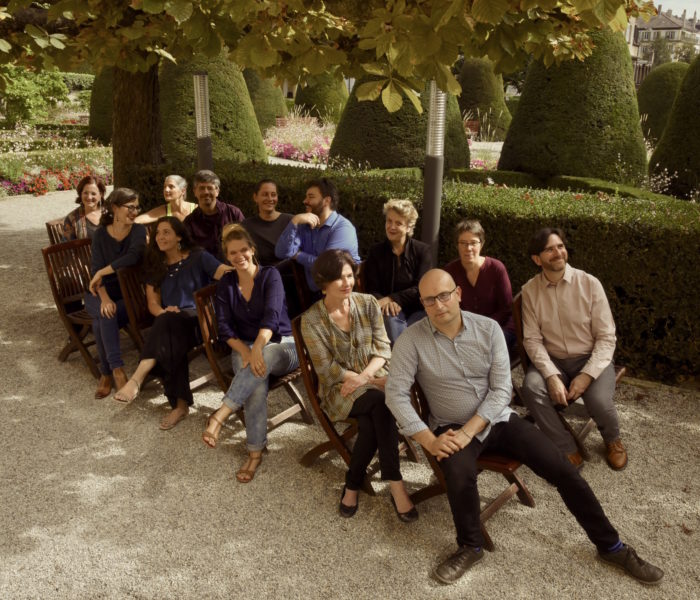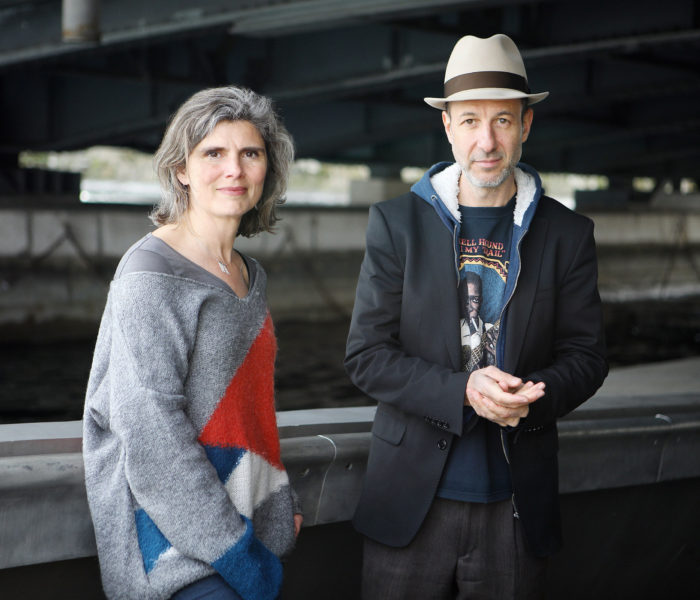Dédié à la création musicale sous tous ses horizons, le programme des dix journées festivalières affiche installations, musiques instrumentale, électroacoustique et expérimentale, performances, partages d’écoute, rencontres et débats.
Après notre interview de Marie Jeanson et Denis Schuler, hier, notre reportage sur la trentième édition du festival Archipel continue …
Le concert inaugural du vendredi 16 avril en soirée donne le ton avec deux pièces d’orchestre très étonnantes sous la baguette de la cheffe Kanako Abe.
Sur le plateau de la MCP-grande salle, deux phalanges se sont réunies, l’Orchestre de Chambre de Genève et l’Orchestre de la Haute École de Genève aux côtés de la première soliste de la soirée, la violoniste bulgare Rada Hadjikostova. Allégorie de la nuit du sicilien Salvatore Sciarrino n’est pas à proprement parler un concerto même s’il débute très abruptement par des citations du célèbre concerto pour violon en mi mineur de Félix Mendelssohn passé au filtre déformant de la mémoire. La musique de Mendelssohn est très rapidement dissoute, aplanie et méconnaissable, la violoniste immobilisant son geste sur une note tenue dans l’aigu de son registre tandis que de l’orchestre quasi silencieux nous parviennent quelques manifestations bruités d’un paysage nocturne avec bruissements d’ailes et chants d’oiseaux (bisbigliandi des vents) : musique recyclée, dirons-nous, et écoute écologique prônée par notre compositeur. Étrange également est cette « cadence-oiseau » de la soliste, entre humour et poésie, jouée dans la zone des harmoniques extrême-aigus de l’instrument, juste avant le retour en force des salves instrumentales et bruyantes du concerto pour conclure la pièce. Le parti-pris théâtral est bien assumé par nos musiciens emmenés par le geste très concentré de Kanako Abe. Ici, à 1h54mn :
La seconde pièce de la canadienne installée à Londres Cassandra Miller nous éloigne toujours davantage des formes traditionnelles, invitant sur le devant de la scène (mais filmé de dos !) le violoncelliste américain Charles Curtis féru de musiques expérimentales et performances tous azimuts, qui reviendra durant le festival, seul avec son violoncelle lors deux récitals. Duet pour violoncelle et grand orchestre (les vents par trois) est une œuvre conceptuelle – on pense au génial Ives – jouant sur la superposition de strates instrumentales évoluant dans des temporalités et contextes sonores autonomes. Celle du violoncelliste est la plus lente et la plus simple – un balancement immuable et très zen sur quelques notes – tandis que les cuivres hauts en couleurs claironnent une mélodie populaire (napolitaine) quand les cordes divisées rajoutent, une puis deux couches sonores dans un mouvement d’amplification très jubilatoire. Le maelström bruyant fait capituler notre soliste. Il rejouera cependant, mais dans un contexte où les rôles se sont inversés (c’est l’orchestre qui se balance) et où il peut finalement briller dans une sorte de « cadence » plus volubile ! Le temps, parfois, semble s’étirer en longueur mais le processus opère jusqu’au coup de théâtre final.
Charles Curtis est exemplaire (il en a vu d’autres !) et l’orchestre très engagé dans cette aventure risquée dont Kanako Abe tient très sûrement les rênes.
« L’écran fera toujours écran », ne nous leurrons pas, mais la musique est au rendez-vous, retransmise dans de bonnes conditions d’écoute malgré quelques perturbations sur le site dues à des interférences ponctuelles.
Michèle Tosi



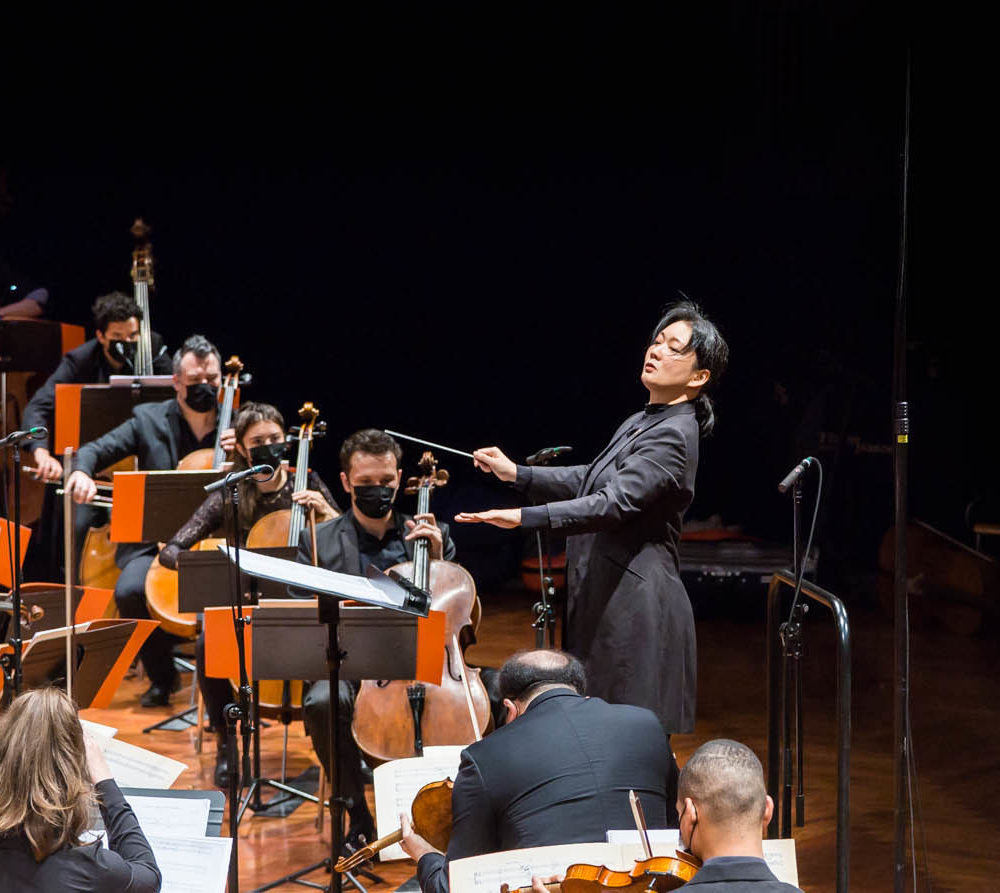)

